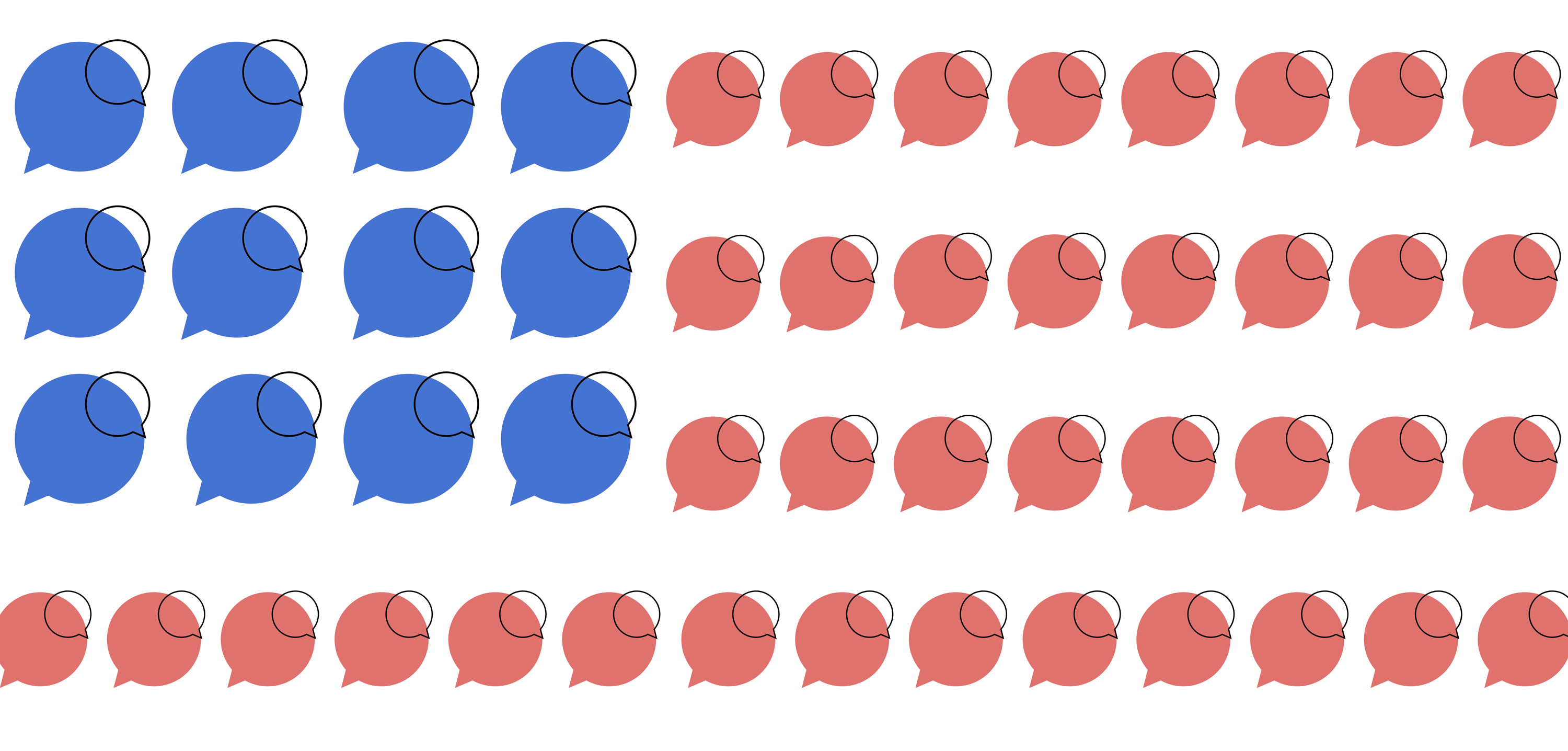Overcoming burnout in a distributed world

Dr. Sahar Yousef is a cognitive neuroscientist and leading expert on productivity, as well as a faculty member at UC Berkeley’s Haas School of Business. She teaches a popular MBA class, “The Science of Productivity and Performance,” and has been featured in Forbes, The Wall Street Journal, Wired, and Business Insider.
Outside of the academic world, Sahar co-runs “Becoming Superhuman,” a training and consulting firm that teaches busy professionals who think for a living how to get their most important work done, in less time, with less neurological stress.
Burnout is on the rise. If you haven’t felt it yourself recently, I’m sure you’ve seen it in your team. In Asana’s Anatomy of Work Index—research which I helped analyze—the rising prevalence of burnout was one of the most alarming findings, with 71% of respondents saying they’ve experienced burnout at least once in the last year. The number is even more stark for workers in the US—89%.
Unfortunately, burnout has been steadily rising since May 2020 and we have now hit a critical threshold. As it currently stands, people and organizations are being set up for failure, since high burnout leads to lower morale, more mistakes, and a lack of engagement with work.
So, why are knowledge workers burning out and what can we do about it? Let’s look at three major causes of burnout and how you and your team can combat them.
1. Being overworked
Knowledge workers have been working longer hours at home during the COVID-19 pandemic. The Anatomy of Work Index confirms that, with 87% of respondents saying they work nearly 2 hours later every day—or 455 hours every year, compared to 242 hours in 2019. As unhealthy as longer working hours can be, that’s not the type of “overwork” I want to focus on here.
Instead, I want to address cognitive overload. In other words—what happens when our brains are forced to process more information than usual and get tired as a result. And one of the biggest culprits of cognitive overload in this new remote world is video meetings.
Video conference fatigue is real—and not just in the sense that we’re tired of communicating with so many people only through video chat. Video conferencing is actually physiologically more draining and requires more neurological effort to stay alert and maintain attention. At the end of the day, when your body is tired and your attention is completely sapped, it isn’t your fault—your brain is overloaded.
Here are two solutions for how to combat video fatigue:
- 30 is the new 60 (for minutes in meetings): When scheduling meetings, you need to have a really good reason to schedule a block of time longer than 30 minutes. In a study conducted by Microsoft, we discovered that after the 30-minute mark of a video call, the brain experiences excess fatigue, making it very difficult to concentrate. If you must schedule longer meetings, or blocks of meetings, make time for a 1-minute break at the 30-minute mark. It’ll really help your brain reset and maintain energy for the next 30 minutes.
- Hide self-view and talk on the phone when possible: Imagine if someone walked into a conference room for a meeting carrying a full-length mirror to watch themselves. Sounds unusual and distracting, right? That’s essentially what we’re all doing when we see our own faces in a video call. The fusiform face area (FFA)—the area of the brain dedicated to processing faces—cannot be turned off, adding to the cognitive overload you feel. To remedy the situation, either “Hide self view” (an option in Zoom) or just keep a stack of small sticky notes next to your desk so you can cover your face while you are on video calls. Another idea—do an “audio-only” meeting (remember to put it in the meeting invitation so people can look forward to an audio-only call) or, if you’re comfortable, talk on the good old-fashioned phone and take the call on the road by going on a walk around the house or neighborhood.
2. Not being able to switch off or disconnect from work
In the Anatomy of Work Index, we also found that another contributor to increased burnout is the inability to switch off or disconnect after work (especially in the evenings).
Why is it so hard to switch off at the end of the day? It comes down to associations our brains have with home—and how those associations are typically at odds with work. This problem isn’t about working from home in general. It’s specifically about working from home during a pandemic when we have no private office and on top of it all, our partners, kids, roommates, dogs, parents—you name it—are all under the same roof.
If we don’t have dedicated spaces for work, like an office or a desk in a separate work-specific area, it’s hard for our brain to cognitively prepare for work and neurologically transition into that brain-state and also out of that brain-state. Normally, when we’re at home, our brain is ready to relax, spend time with family and friends, eat, sleep, and watch Netflix. Our brains are primed and ready for these activities because that is exactly what we’ve historically done at home. The neural networks in our brains have built up that connection and association over many years. When it comes to our current work environments, if we don’t have clear cognitive “boundaries” or associations between different areas in our homes, our brains are literally electrically confused about why we are trying to work in our home environment.
The biohack here is to create clean and clear work associations with certain things in your house when it’s time for work. Don’t worry—this is way easier to do than it sounds.
Design cognitive associations: If you have enough room in your house, make a dedicated working space—even if it’s just a desk in a closet or a desk facing a wall or window (so you can’t see the rest of the room). When it’s time for work, that is your spot. Don’t take your computer over to the couch or into your bed. That will mess up your cognitive associations. Likewise, when work is over, don’t casually sit at your desk and do non-work activities there.
No room? No problem. There are tons of other ways to build strong and useful cognitive associations that will help your brain easily enter and exit work mode. If you don’t have room for a dedicated desk, you can use a physical or sensory trigger to enter focus mode.
For example, light a candle with a specific scent when you sit down to start a big task. Cover your kitchen table with a specific table cloth when it’s time to work, and when the day is over, put it away. Get dressed in “work” clothes. Have a special “work” mug that you never use at night or on weekends. And a very effective cognitive trigger is music. Play a specific song at the beginning of your work day and a song to end the workday. You can also use “focus music” to drown out the sounds of your home and, more importantly, create a “cognitive environment” for focus and productivity that you can turn off.
3. Lack of clarity on tasks and roles
The Anatomy of Work Index found that 29% of knowledge workers feel overworked from a lack of clarity on tasks and roles. That lack of clarity is so exhausting because it makes people feel disconnected from each other and from the broader goals of the organization. And, when that happens, knowledge workers feel unmotivated and like they’re working in an isolated vacuum.
As a manager—or as an individual contributor—one way to be more intentional and make meaningful progress every day is to completely rethink your “to-do list.” Pick the one to three most important things you need to do that day and write them down on a piece of paper. I call these MITs (or most important tasks). These are meaningful chunks of work that, when completed, make the day feel like a success and allow yourself permission to “turn off” and stop checking email and doing work late into the day.
If you’re a manager, have you and your team share their MITs every day through your team messaging system. By establishing this shared work practice, you are:
- Empowering people to prioritize their most important work over small tasks like email and chat.
- Implicitly telling them that they don’t need to work 24/7—their MITs are the standard of success for the day and once those are done, they can reliably and comfortably turn off.
Seems unusually simple, but it is highly effective and science-backed.
My lab and I recently launched a three-week challenge with an entire organization around daily MIT setting. By committing to setting daily MITs in Slack, we saw a 28% increase in individual productivity and a 42% reduction in burnout (from the CEO all the way down to the newest intern).
Discover your burnout risk level
Curious to know if you’re part of the 89% of U.S. professionals who have experienced burnout?
You can take the following UC Berkeley Burnout Risk Index (~3 minutes; use code ‘asana’) to measure both the extent and pattern of any burnout symptoms you may have. You will receive your results and recommendations via email from the Becoming Superhuman Lab to you.
Please note that Asana is not affiliated with either UC Berkeley or the Becoming Superhuman Lab and any information they collect from your participation in their survey is subject to UC Berkeley’s data collection and privacy policies.

